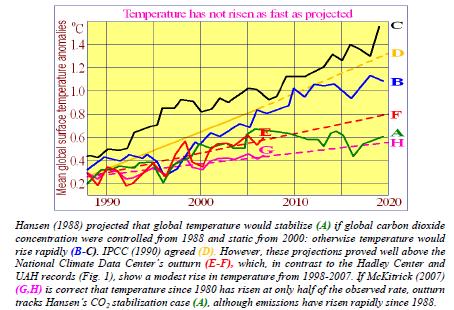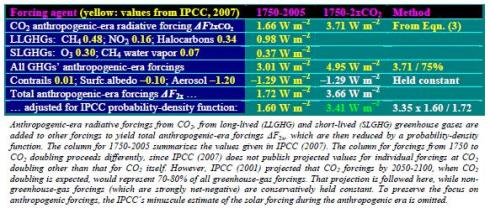United Nations Agenda 21 to Rule the Oceans
April 20, 2011 1 Comment
By Dennis Amble
April 20, 2011
Whilst everyone has been occupied with EPA Administrator Lisa Jackson’s defense before Congress of the EPA’s attempts to regulate CO2 emissions, the Administration has continued to move towards International Ocean Governance with the establishment of a Governance Coordinating Committee for the National Ocean Council, (NOC). The NOC has been long in the making and earlier history of Ocean legislation can be found here, going back to the 1969 Stratton Commission and beyond. However the current impetus dates to the Pew Oceans Commission in 2003 and the U.S. Commission on Ocean Policy – An Ocean Blueprint for the 21st Century in 2004, mandated by the Oceans Act 2000.
The recommendations of the Pew Oceans Commission and the US Commission on Ocean Policy were very similar, even down to the coastal maps used to preface the reports. The pretence was abandoned in 2005 with the formation of the Joint Ocean Commission Initiative, co-chaired by the chairs of the Pew Commission and the US Commission on Ocean Policy.
In 2007 came Oceans-21, the short name given to HR-21, The Oceans Conservation, Education, and National Strategy for the 21st Century Act. It was designed to implement the policies favoured by the Joint Oceans Commission Initiative, but it never became law.
On June 12th 2009 the White House published a Presidential Memorandum to Heads of Executive Departments and Agencies relating to a “National Policy for The Ocean, Our Coasts and The Great Lakes”. It established an Interagency Ocean Policy Task Force (Task Force), to be led by the Chair of the Council on Environmental Quality “in order to better meet our Nation’s stewardship responsibilities for the oceans, coasts, and Great Lakes”
The influence of the climate agenda was clear:
“Challenges include water pollution and degraded coastal water quality caused by industrial and commercial activities both onshore and offshore, habitat loss, fishing impacts, invasive species, disease, rising sea levels, and ocean acidification. Oceans both influence and are affected by climate change. They not only affect climate processes but they are also under stress from the impacts of climate change.”
The Pew and US Commission policies surfaced again in the report of the Task Force, the Final Recommendations Of The Interagency Ocean Policy Task Force, (OPTF), July 19, 2010.
Freedom Advocates claimed that “thirty states would be encroached upon by Obama’s Executive Order establishing the National Ocean Council for control over America’s oceans, coastlines and the Great Lakes.”
THE TASK FORCE
The members of the Task Force included, amongst other government agency representation:
Nancy Sutley, Task Force Chair. She is also chair of The Council on Environmental Quality and is principal environmental policy adviser to the President. Ms. Sutley was a special assistant to Carol Browner, administrator of the Environmental Protection Agency under President Bill Clinton. Sutley is co-chair of the National Ocean Council with John Holdren.
Jane Lubchenco Undersecretary for Oceans and Atmosphere, NOAA Administrator, she was a member of the Pew Oceans Commission in 2003 and is still, as a government employee, listed as a current member of that organisation and a member of the Joint Ocean Commission. She is also a member of the National Ocean Council as NOAA Administrator.
Peter Silva, EPA Assistant Administrator for Water. Silva resigned from post on January 14 2011, a day after he decided to revoke the permit of a mountain top mining proposal in Appalachia. Nancy Stoner, deputy assistant administrator, is now Acting Assistant Administrator. She was with the Natural Resources Defense Council before joining the EPA.
Lubchenco served, until her NOAA appointment, on the boards of the World Resources Institute, Environmental Defense, and on advisory committees for the National Research Council, the National Science Foundation and the United Nations Environment Programme.
She was a contributor to the 1991 report of the National Research Council, Policy Implications of Greenhouse Warming, along with Stephen Schneider, Maurice Strong, Tom Karl, William Nordhaus and others. She is shown as an Advisory Board Member of Diversitas, a UN linked, international government funded diversity institute, along with Paul Ehrlich, and Harold Mooney, of Stanford.
Ms. Lubchenco is a member of the National Research Council panel, America’s Climate Choices, along with long time associate John Holdren, Director of President Obama’s Office of Science and Technology. They are both on the National Oceans Council. In an interview in July 2009, with Yale Environment 360, she referred to ocean acidification as global warming’s “equally evil twin.” The interview title was hubristically titled, “Restoring Science to US Climate Policy”
Her policies on fishing have been heavily attacked by the industry and in July last year, Gloucester Times reported that Massachusetts congressmen Barney Frank and John Tierney had “called for her to resign or be fired over what they described as her “hostility” and lack of accountability toward the American fishing industry.”
In its introduction, the presidential task force report invoked the Deepwater Horizon-BP oil spill in the Gulf of Mexico, as one justification for full federal control of the oceans around the US coasts. It also stated that, “it is the Policy of the United States to use the best available science and knowledge to inform decisions affecting the ocean, our coasts, and the Great Lakes, and enhance humanity’s capacity to understand, respond, and adapt to a changing global environment.” Yet their “best available science” appears to be the contested science from the Intergovernmental Panel on Climate Change, the IPCC, as shown in these familiar claims.
Climate change is impacting the ocean, our coasts, and the Great Lakes. Increasing water temperatures are altering habitats, migratory patterns, and ecosystem structure and function.
Coastal communities are facing sea-level rise, inundation, increased threats from storms, erosion, and significant loss of coastal wetlands.
The ocean’s ability to absorb carbon dioxide from the atmosphere buffers the impacts of climate change, but also causes the ocean to become more acidic, threatening not only the survival of individual species of marine life, but also entire marine ecosystems.
The ocean buffers increased global temperatures by absorbing heat, but increasing temperatures are causing sea levels to rise by expanding seawater volume and melting land-based ice. Increased temperatures may eventually reduce the ocean’s ability to absorb carbon dioxide.
Their “best available science” includes Jane Lubchenco’s debasement of science in this propaganda video on the NOAA website, purporting to show ocean acidification. Of course the objective is to provide another scary reason for taxing energy. On sea level, NOAA’s own tide gauge data show an average sea level rise of less than 2 inches per century, in line with this assessment by S. J. Holgate, Proudman Oceanographic Laboratory, Liverpool, UK.
Read Full Report…



